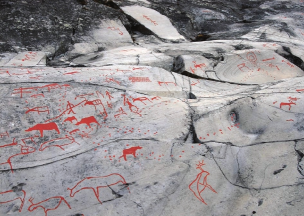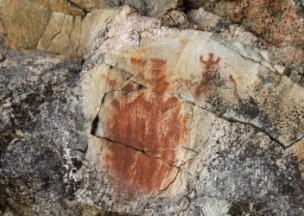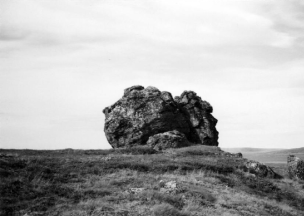
An examination of meanings associated with bears among early hunter-gatherer-fisher populations in northern Fennoscandia, based on beliefs and ritual practices in the
ethnohistoric record, indicates that they were an animal attributed multiple meanings in prehistoric as well as historic times. They were clan ancestors, spirit masters and symbols of power and reincarnation such as rebirth and the change of seasons. The evidence indicates a pattern of local variation and identities rather than a uniform regional pattern, and some large-scale differences from the coastal area of Norway in the west to Karelia in the east.

Rock art is defined as systematic and man-made depressions or paintings on a smooth rock surface. In contrast to other cultural monuments, they have hardly any ecological importance. Nevertheless rock art sites should be regarded as a part of the landscape, both with respect to interpretation and preservation. The method of gluing together fragmented rock art panels with an organic glue, and the repairing of cracks on rock art panels by mortar, are criticised. The author raises doubts about the ‘crumbling effect’ of mosses and the effect of ‘aggressive lichen’, postulated by other authors. The need for a long time perspective and international co-operation in rock art reservation and conservation is underlined, and it is emphasized that experiments with new methods of conservation should be done on panels without rock art. Based on observations of an accidentally covered rock art panel in Gudbrandsdalen, Norway, a new and reversible method for stabilisation of severely weathered rock art panels is proposed, using dissolved calcium carbonate which is precipitated in a calcification process on the weathered rock and in cracks.






